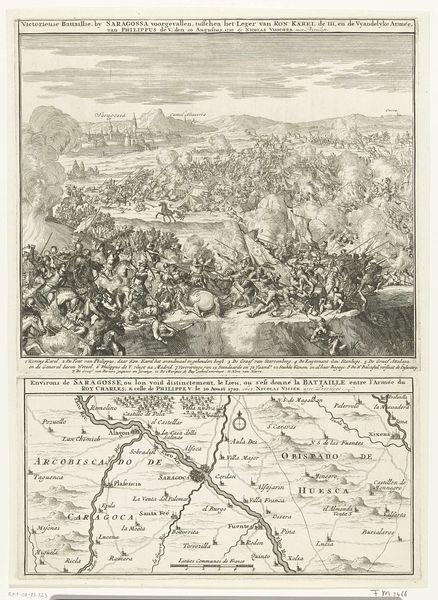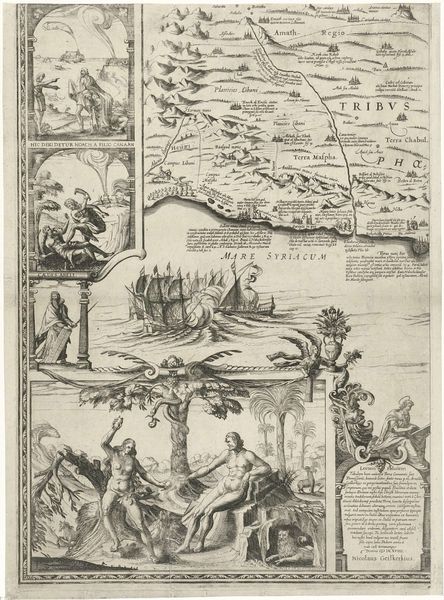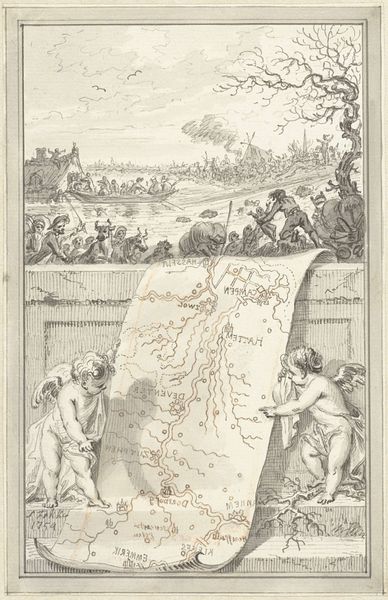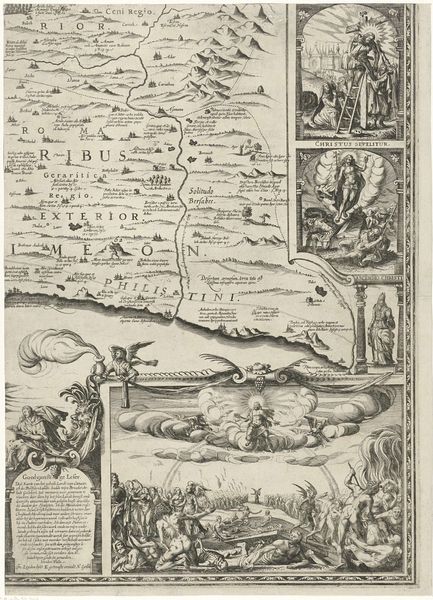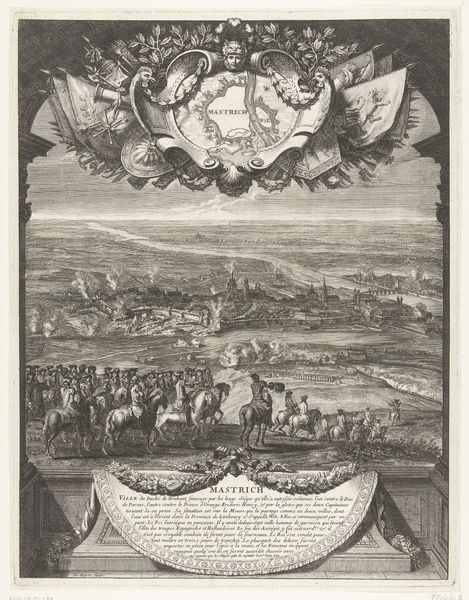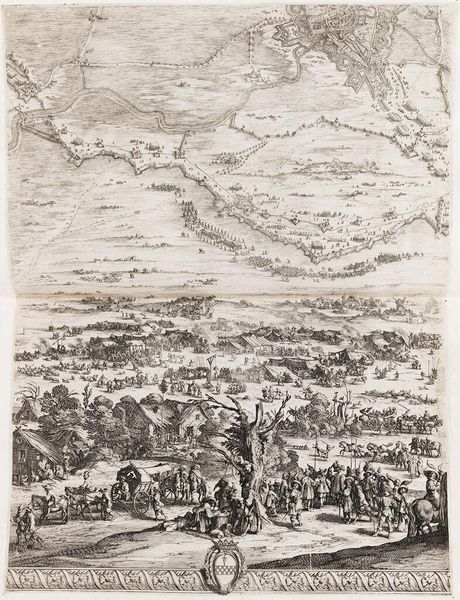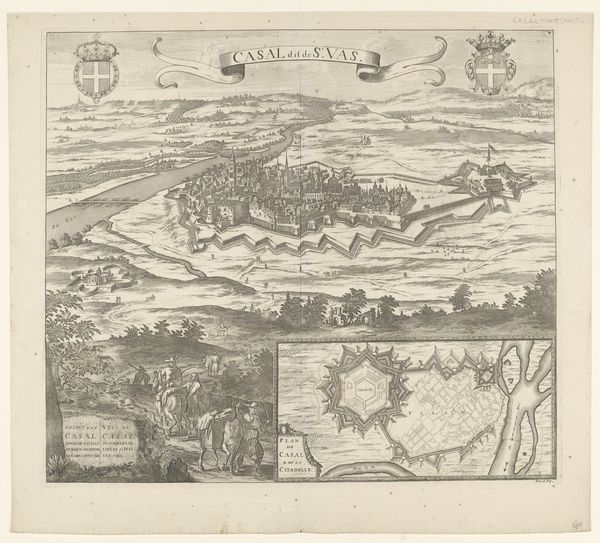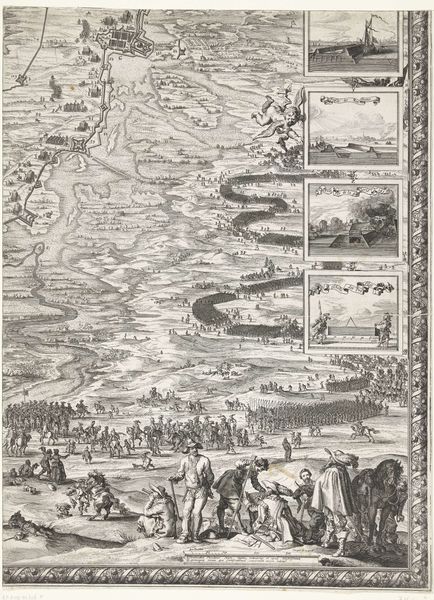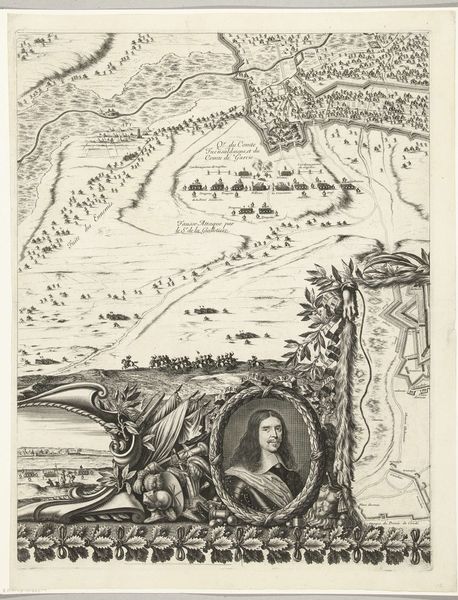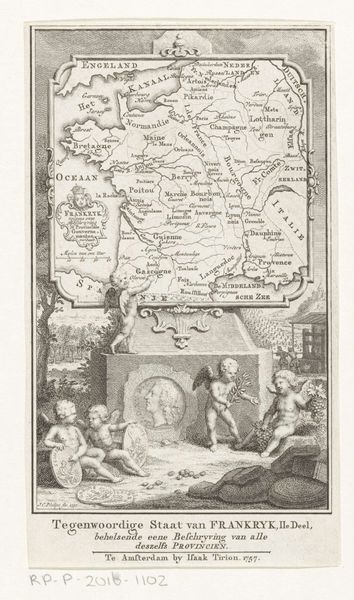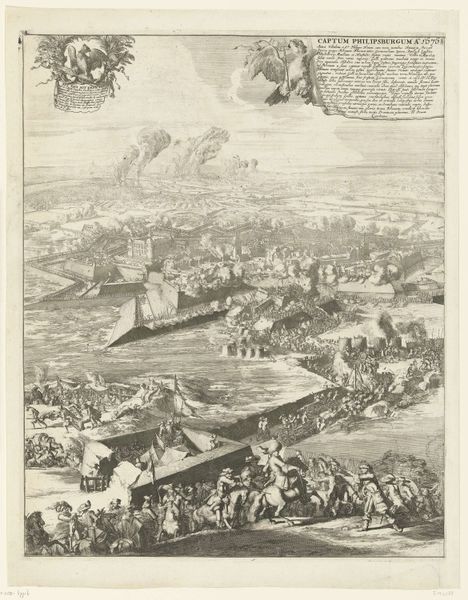
print, etching, engraving
#
baroque
# print
#
etching
#
landscape
#
history-painting
#
engraving
Dimensions: height 163 mm, width 107 mm
Copyright: Rijks Museum: Open Domain
Curator: This print, made through engraving and etching techniques, is entitled "Doorbraak van de Rijn- en IJsseldijken", which translates to "Breakthrough of the Rhine and IJssel Dikes." It was created in 1754 by Simon Fokke. Editor: What strikes me immediately is the dramatic juxtaposition— the devastation above contrasts so sharply with the cherubic figures handling the map below. It feels almost...cold in its execution, despite the chaotic scene. Curator: It speaks to the era's approach to historical representation. Note how the human drama of the flood – people fleeing, houses collapsing – is framed by allegorical figures and a meticulously rendered map. This blend of immediacy and distance reflects a desire to understand and document tragedy. Editor: Absolutely. And think about the materiality: an etching allows for precise detail. See the textures on the stone ledge, the individual lines illustrating the flood waters? Fokke emphasizes both the built infrastructure, those failing dikes, and the untamed force of nature. This speaks volumes about our endless struggles to control the material world around us. Curator: It is also important to understand the context in which this piece was commissioned and circulated. Prints such as this one were often created for a broader public to communicate important events. Disasters like the breaching of the dikes had tremendous social and political consequences, which artists had a significant role in relaying. Editor: And the print format also made it accessible. This wasn't a unique painting reserved for the elite. It was meant to be replicated and distributed, influencing public perception. We see it not only in the grand narratives of disaster but in the granular textures and accessible medium itself. The means of production are crucial. Curator: Indeed, we must consider it both as a record and a carefully constructed statement about humanity's place in a world constantly being reshaped by nature. Editor: It prompts reflection. Were these dikes built using sustainable local materials and engineering knowledge, or were outside interventions somehow involved, reflecting back the contemporary disaster-capitalism complex? The image certainly gives plenty to consider.
Comments
No comments
Be the first to comment and join the conversation on the ultimate creative platform.
